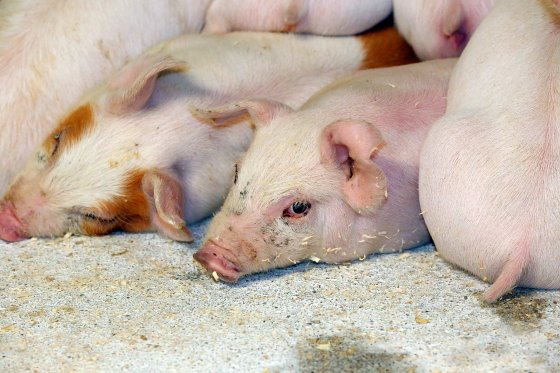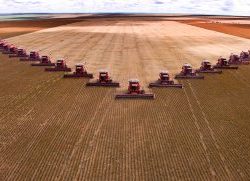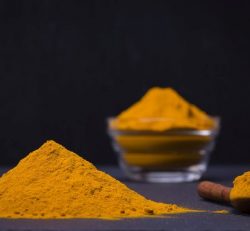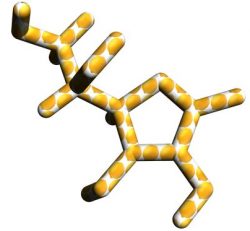EU TO ADAPT COPPER REDUCTION PLANS FOR PIGS
The reduction of copper levels for pigs to 25 mg/kg for all age groups is off the table in the European Union. The proposal, suggested in an FEEDAP Panel Opinion in 2016, will be replaced with different levels.
Instead, the European Commission chose to follow feed industry experts at the European Feed Manufacturers’ Federation (FEFAC). They proposed a plan taking into account environment, animal performance and health. Pig Progress talked to FEFAC Animal Nutrition Committee expert Erik Dam Jensen about its contents.
Copper: An essential trace element
Copper is an essential trace element for all forms of life and performs several biological functions. However, high levels of copper (higher than the nutritional needs) used to be used in the past for their positive impact to help animals to cope with pathogens, in particular for young animals (piglets).
These high levels of copper are nevertheless excreted by the animals and may then pose a threat for the environment. For that reason, EFSA’s Panel on Additives and Products or Substances used in Animal Feed (FEEDAP) published an ‘opinion’ (or advice) in 2016. This entailed to reduce current total copper levels. These were 170 mg/kg complete feed until 12 weeks of age, and would have to become 25 mg per kg of feed, regardless of age.
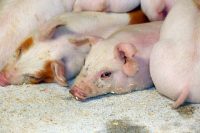
Lowering the copper levels in small piglet feed too soon and too much would be very critical on pig health management and performance. Photo: Henk Riswick
Advice based on medicated feed trials
These proposed reduction levels were based on American trials where the piglets, no matter which test groups with different copper levels, all received medicated feed (220 mg tetracycline) and results showed that lowering the copper to 25 mg there was no impact on performance or growth nor faecal scores.
It is a known fact, however, that when copper levels are dramatically reduced, the need to use antibiotics increases. This is due to e.g. gut health problems. So, the fact that these trials formed a basis where the pigs were medicated would be neither a realistic nor a valid scenario for the feed industry or farmers. And higher levels antibiotics as a result of reduced copper levels may not be the direction the EU wants to be heading.
Antimicrobial reduction high on the agenda
“Absolutely not,” said FEFAC Animal Nutrition Committee expert Erik Dam Jensen, in an interview with Pig Progress. “On a global level, antimicrobial reduction is high on the agenda and the livestock sector, in particular in the EU, is required to implement animal health management strategy to reduce the need for antibiotics, so proposing changes in animal nutrition that will clearly lead to an increase in antibiotic use is not what we want.
“The end consumers, the EU and the livestock sector want the opposite. The US trials with the medicated feed can simply not be considered a valid reference and are totally out of context. This was also noted by the industry and farmers and later by the EU Commission.”
Healthy reduction proposed
The invalid base for the FEEDAP Panel opinion from 2 years ago made FEFAC look critically to the proposed changes. The federation has since then worked out what it considers a better, scientific and more realistic plan. This will prevent the pig sector having to use more antibiotics because of proposed health problems with the low copper levels proposed.
Mr Jensen said, “A very important study was been published in 2015 by Paul Bikker and others from Wageningen University and Research Centre in the Netherlands, explaining the effects of reducing copper levels for weaned pigs and this study is in full support of our proposal.”
Formulating a step-wise reduction
He continued to say, “These factors, in combination with our own impact assessment, has helped us to formulate a step wise reduction of copper levels in pig feed that better matches the reality, from both an animal nutrition and health perspective as well as an environmental perspective.
“The current regulation looks at piglets up to 12 weeks. The new and upcoming legislation from the EU Commission talks about weeks after weaning and this fits well in the phase feeding of piglets as practised already. So there are no big practical issues related to this aspect for farmers.”
See the old and the new situation and the proposed levels in Table 1.
Table 1 – The old and new situation for different age groups ingrowing pigs. All figures in total mg/kg complete feed.
*) Current legislation states: piglets up to 12 weeks

By Pig Progress
Complete support from EU
Mr Jensen said, “The first to be convinced of our alternative proposal was the EU Commission, which issued a legal proposal for amendment of the present maximum limits for copper along the FEFAC proposal. In parallel, national associations of compound feed manufacturers, member of FEFAC, promoted our approach at national level with the support of many pig farmers organisations.”
This showed to be extremely positive: the members of the Standing Committee on Plants, Animals, Food and Feed (SCoPAFF), the Regulatory Committee composed of national authorities from the 28 member states expressed to be unanimously in favour of the legislative proposal of the EU Commission at a recent meeting on 24-25 April, 2018.
No longer a proposal, but legislation
This committee has the last say on such decisions. This means that it is no longer a proposal, but will be the new legislation on this topic once published in the Official Journal of the European Union, which is expected soon.
Mr Jensen: “I am happy that FEFAC demonstrated to the authorities that lowering the copper levels in small piglet feed too soon and too much would be very critical on pig health management and performance. At the same time, the bulk amount of feed is not consumed in the small piglets.
“It can therefore be of relevance to look on older age groups and slightly reduce the levels in the older pigs. This is what we have proposed for the age from 5-8 weeks after weaning, and clearly this proposal has gained full acceptance and is the future legislation. Mind you: the bulk of the copper used in agriculture is actually not related to animal feeding.”
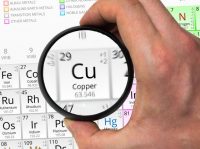
Copper is an essential trace element for all forms of life. Photo: Shutterstock}
Animal nutrition: part of health management
The copper story fits in FEFAC’s ambition and vision to make animal nutrition part of the health management.
Mr Jensen said, “It is important to optimise animal feed formulations to such an extent that we can boost animal nutrition, supporting the good normal gut health in piglets, and support the immune system to optimise growth and production. Nutrition is key and forms the basis for good normal healthy animal production and will contribute to a reduced dependency on antibiotics.”
The time for the new levels for piglet feed to enter into force will as mentioned depend on the exact date of publication in the Official Journal of the European Union. Usually the published new regulation will enter into force on the 20th day after publication. It is expected that a transition time will be included in the new regulation, as still volumes of feed and premixes circulate in the market based on the ‘old’ inclusion levels of copper.
Emmy Koeleman
Editor: All About Feed & Dairy Global
Source: www.pigprogress.net


